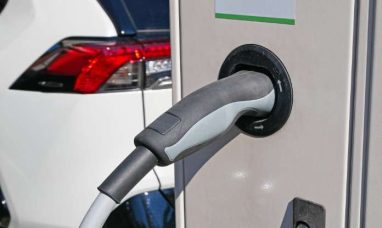BOSTON, Dec. 11, 2023 /PRNewswire/ — Could cars with perfect night vision one day be a possibility? With a more heightened awareness of their surroundings in low visibility conditions thanks to short wave infrared (SWIR) image sensors, vehicles are on the road to visualizing beyond what the human eye can see. The powerful combination of new SWIR sensors with radar technology will allow cars to think fast and accurately to determine their surroundings, keeping passengers safe any time of the day.

Having a vehicle that can be trusted is of the utmost importance, and the human eye is limited in what it can perceive. Infrared light can be used to identify objects off the visible spectrum and SWIR sensors harness this ability. When used within vehicles, they are able to capture images in the dark, rain, and fog.
Ensuring the bush at the side of the road is not, in fact, a hefty badger, will be easier with the use of SWIR sensors, as they are able to pick up objects hidden even in the dark. The sensors use AI technology to be able to identify specific objects, to tell the all-important differences between stationary objects and scuttering organisms.
Regular cameras on cars, known as CMOS sensors, are excellent at capturing the physical spectrum in daylight and are fitted alongside radar technology in many new cars today. As light scatters off particles picked up by these sensors, they work best on sunny, bright days, leaving gaps in their abilities. This does not occur in the infra-red region. Adding short-wave infrared sensors to the vehicle will allow the sensors to work together whenever the driver needs them, bringing about a more holistic and accurate view of the car’s surroundings. High costs are currently prohibiting widespread adoption, but companies such as Omnivision and Trieye are pursuing new technologies, bringing down costs to a fraction of the status quo. This is hoped to make SWIR technology accessible across the entire automotive market.
Radars are also key to safe driving, and SWIR sensors can fill in the blanks where this technology cannot reach. Their combination is very valuable for safety in vehicles, as together they can identify objects, distance, and speed in relation to the car. Drivers can then be communicated with through their smart displays in seconds. This could also mean huge advancements in autonomous qualities later down the line, such as automatic emergency braking, and allow cars to be just as efficient at night as in the day, ensuring there is no compromise when it comes to safety.
Bouncing electromagnetic signals off trees and local runners can help determine their distances away from the car. Automotive radars use antennae to emit directed signals from the car, similar to those used in WiFi and 5G communications. The time in which they return lets the car know if it is in a safe proximity to its surroundings, without the driver having to focus on everything all at once. Not only will the car be doing fast physics, but its computers will have more reliable image memory and quicker responses than that of any human.
Swerving a deer running towards the car at night could also be less of a concern. The radars’ clever assessment of a change in the frequency that returns to the source can identify how fast an object is moving towards it, bringing another dimension of safety and trust to the vehicles, especially at night, in low light or fog.
Radar technology is being developed to employ even more antennae and channels to pick up a wider variety of frequencies, returning more accurate results. Alongside the improved accessibility of SWIR sensors, this will one day increase the awareness of cars to an even more impressive degree, keeping all passengers and pedestrians safe.
The worry of low visibility could be handed trustingly over to the car with the use of SWIR image sensors and radar technology, although it might initially feel strange. However, with the convenience of traveling through fog, dirt, and darkness at any time of day with physics-approved safety features, people could begin to relax into the car’s ability to prevent collisions.
For more information, please see the IDTechEx reports, “Emerging Image Sensor Technologies 2024-2034. Applications and Markets” and “Automotive Radar 2024-2044: Forecasts, Technologies, Applications“. Sample pages are available for both of these reports.
To find out more about the market research IDTechEx has to offer, please visit www.IDTechEx.com.
About IDTechEx
IDTechEx guides your strategic business decisions through its Research, Subscription and Consultancy products, helping you profit from emerging technologies. For more information, contact [email protected] or visit www.IDTechEx.com.
Media Contact:
Lucy Rogers
Sales and Marketing Administrator
[email protected]
+44(0)1223 812300
Social Media Links:
Twitter: www.twitter.com/IDTechEx
LinkedIn: www.linkedin.com/company/IDTechEx
Logo: https://mma.prnewswire.com/media/478371/IDTechEx_Logo.jpg
![]() View original content:https://www.prnewswire.com/news-releases/cars-on-the-lookout-idtechex-explores-image-sensors-and-radars-in-vehicles-302010071.html
View original content:https://www.prnewswire.com/news-releases/cars-on-the-lookout-idtechex-explores-image-sensors-and-radars-in-vehicles-302010071.html
SOURCE IDTechEx

Featured image: Megapixl © Kadmy








